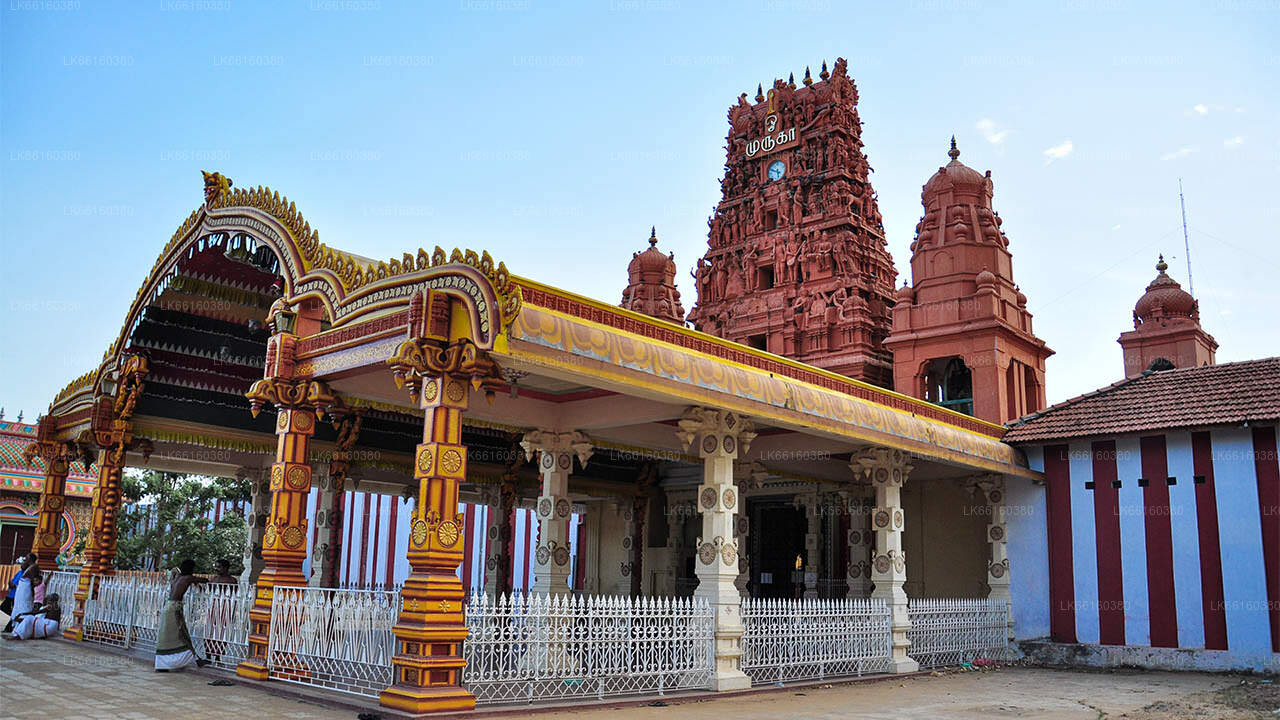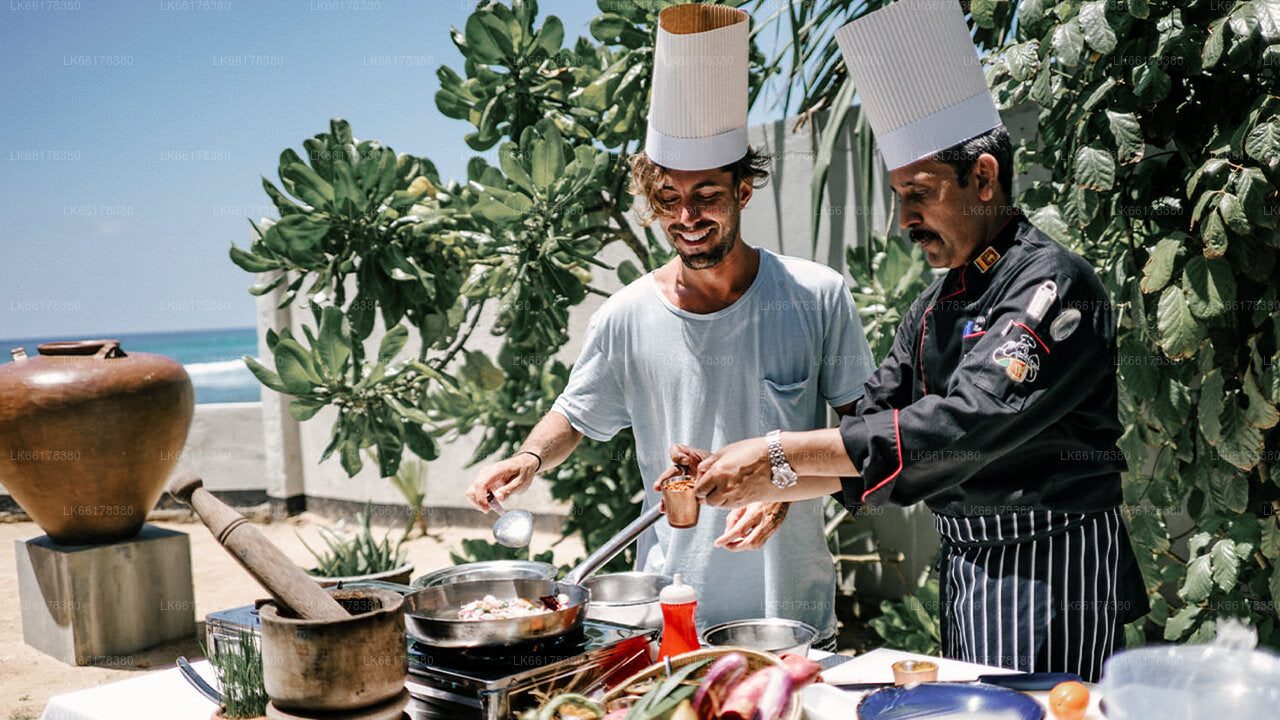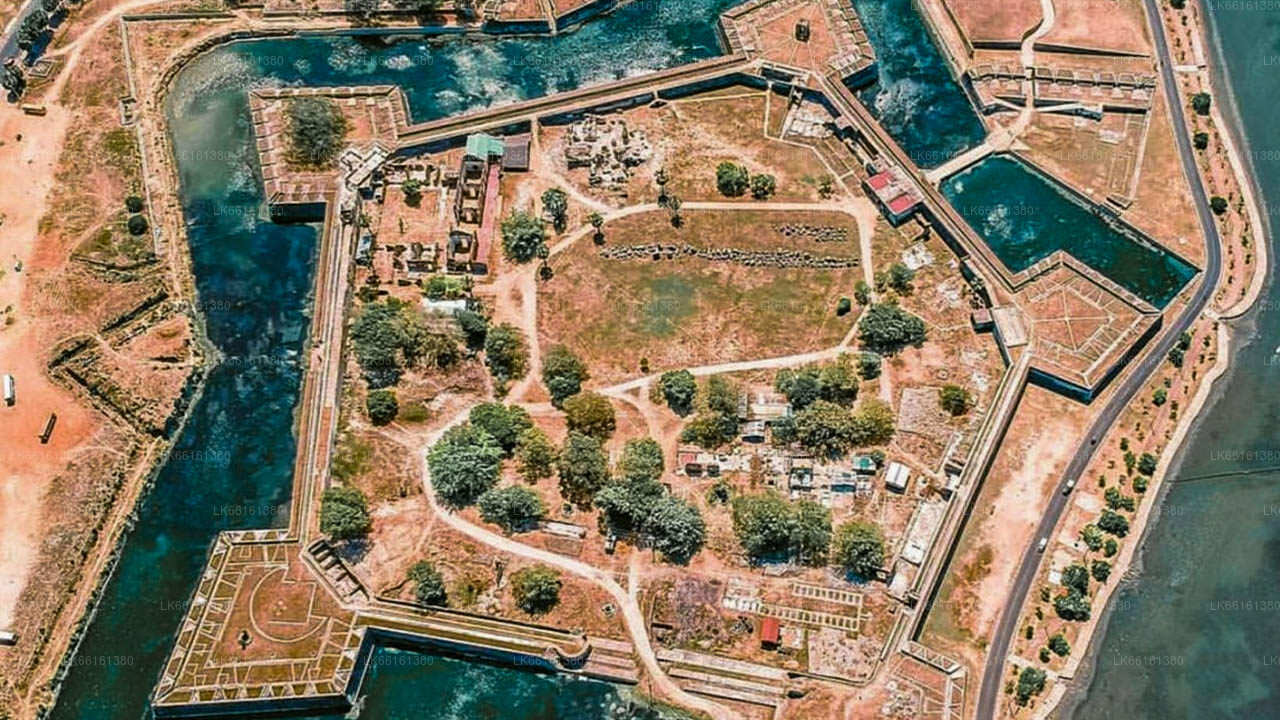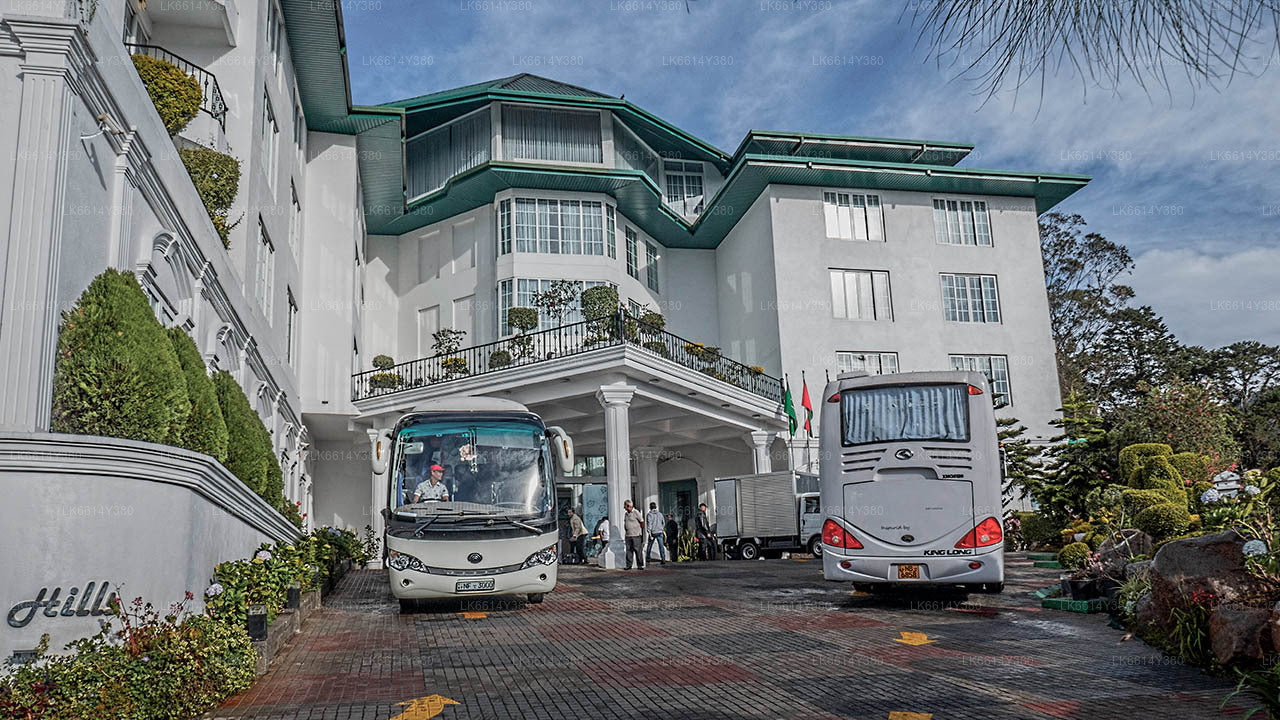
Jaffna City
Jaffna is the main city of Jaffna peninsula in the northernmost district of Sri Lanka. Comfortable intercity busses from Colombo take 10-12 hours to reach the city of Jaffna.
Mullaitivu City
Mullaitivu (Tamil: முல்லைத்தீவு, Singhalesisch: මුලතිව්) ist die wichtigste Stadt des Distrikts Mullaitivu an der Nordostküste der Provinz Nordsri Lanka . Die Stadt war ursprünglich ein Fischerdorf und entwickelte sich im frühen 20. Jahrhundert zu einem Ankerplatz für kleine Segelschiffe, die Güter zwischen Colombo und Jaffna transportierten. In der Stadt gibt es ein Büro des Distriktsekretärs sowie zahlreiche weitere Regierungseinrichtungen und Schulen in und um das Gebiet.
Während der Kandy-Kriege wurde das britische Regierungsgebäude in Mullaitivu von Streitkräften der Pandara Vanniyan und Dissava aus Nuwara Kalawiya angegriffen und belagerten die Festung. Captain Drieberg floh mit seinen malaiischen Truppen in Booten aus der Festung und erreichte Jaffna. Während des Bürgerkriegs in Sri Lanka wurde Mullaitivu zu einem isolierten Stützpunkt der sri-lankischen Streitkräfte. In einer offenen Feldschlacht gelang es der LTTE 1996, den Stützpunkt zu erobern. Anschließend zogen sich die sri-lankischen Streitkräfte aus Mullaitivu zurück, wodurch die LTTE die Kontrolle über das Gebiet gewinnen konnte. Es wurde durch den Tsunami im Indischen Ozean 2004 beschädigt und forderte viele Todesopfer. Die sri-lankische Armee übernahm am 25. Januar 2009 in der Schlacht von Mullaitivu im Rahmen ihrer Offensive gegen die LTTE die Kontrolle über die Stadt. Das Hauptquartier der Sicherheitskräfte in Mullaitivu wurde am 5. Juni 2009 in der Stadt eingerichtet.
Über den Distrikt Mullaitive
Der Distrikt Mullaitivu ist einer der 25 Distrikte Sri Lankas und die Verwaltungsebene zweiter Ebene des Landes. Der Distrikt wird von einem Distriktsekretariat verwaltet, das von einem Distriktsekretär (früher bekannt als Regierungsagent) geleitet wird, der von der Zentralregierung Sri Lankas ernannt wird. Die Hauptstadt des Distrikts ist die Stadt Mullaitivu.
Teile des heutigen Distrikts Mullaitivu waren vor der Kolonialzeit Teil des Königreichs Jaffna . Der Distrikt kam dann unter portugiesische, niederländische und britische Kontrolle. 1815 erlangten die Briten die Kontrolle über die gesamte Insel Ceylon . Sie teilten die Insel in drei ethnisch basierte Verwaltungsstrukturen auf: Low Country Singhalesen , Kandyan Singhalesen und Tamilen. Der Distrikt, der damals zum Distrikt Vanni gehörte, unterstand der tamilischen Verwaltung. 1833 wurden die ethnisch basierten Verwaltungsstrukturen gemäß den Empfehlungen der Colebrooke-Cameron-Kommission zu einer einzigen Verwaltung vereinigt, die in fünf geografische Provinzen unterteilt war. Der Distrikt Vanni bildete zusammen mit den Distrikten Jaffna und Mannar die neue Nordprovinz.
Über die Nordprovinz
Die Nordprovinz liegt im Norden Sri Lankas, nur 35 km von Indien entfernt. Ihre Landfläche beträgt 8.884 km². Die Provinz ist im Westen vom Golf von Mannar und der Palk Bay, im Nordwesten von der Palkstraße, im Norden und Osten vom Golf von Bengalen und im Süden von den Provinzen Eastern, North Central und North Western umgeben. Die Nordprovinz Sri Lankas besteht aus fünf Verwaltungsbezirken: Jaffna, Kilinochchi , Mulaitivu , Vavuniya und Mannar. Jaffna ist die Provinzhauptstadt und Verwaltungssitz des Bezirks Jaffna auf der gleichnamigen Halbinsel.
About Jaffna District
Jaffna is the capital city of the Northern Province, Sri Lanka. 85% of the populations of the Jaffna and Kilinochchi districts are Hindus. The Hindus follow the Saivite tradition. The remainders are largely Roman Catholics or Protestants, some of whom are descendants of colonial settlers, known as Burghers. The Tamils are divided along caste lines, with the farmer-caste Vellalar forming the majority. Sea products, red onion, and tobacco are the main products in Jaffna.
Jaffna is home to beautiful Hindu temples. An Old Dutch Fort still stands well preserved within which is an old Church. Another example of Dutch architecture is the King's House. No visit to Jaffna is complete without tasting the exquisite Jaffna mango, reputed for its sweetness. About 3 km away is the majestic Nallur Kandaswamy Temple, home to the largest religious festival in Jaffna. The Kayts Harbour is an ancient ship docking site in the Jaffna region.
About Northern Province
The Northern Province is one of the 9 provinces of Sri Lanka. The provinces have existed since the 19th century but they didn't have any legal status until 1987 when the 13th Amendment to the 1978 Constitution of Sri Lanka established provincial councils. Between 1988 and 2006 the province was temporarily merged with the Eastern Province to form the North-East Province. The capital of the province is Jaffna.
Northern Province is located in the north of Sri Lanka and is just 22 miles (35 km) from India. The province is surrounded by the Gulf of Mannar and Palk Bay to the west, Palk Strait to the north, the Bay of Bengal to the east and the Eastern, North Central and North Western provinces to the south.The province has a number of lagoons, the largest being Jaffna Lagoon, Nanthi Kadal, Chundikkulam Lagoon, Vadamarachchi Lagoon, Uppu Aru Lagoon, Kokkilai lagoon, Nai Aru Lagoon and Chalai Lagoon.Most of the islands around Sri Lanka are to be found to the west of the Northern Province. The largest islands are: Kayts, Neduntivu, Karaitivu, Pungudutivu and Mandativu.
The Northern Province's population was 1,311,776 in 2007. The majority of the populations are Sri Lankan Tamils, with a minority Sri Lankan Moor and Sinhalese population. Sri Lankan Tamil is the major language spoken in the province by the vast majority of the population. The other language spoken is Sinhala by 1 percent of the population. English is widely spoken and understood in the cities.




















